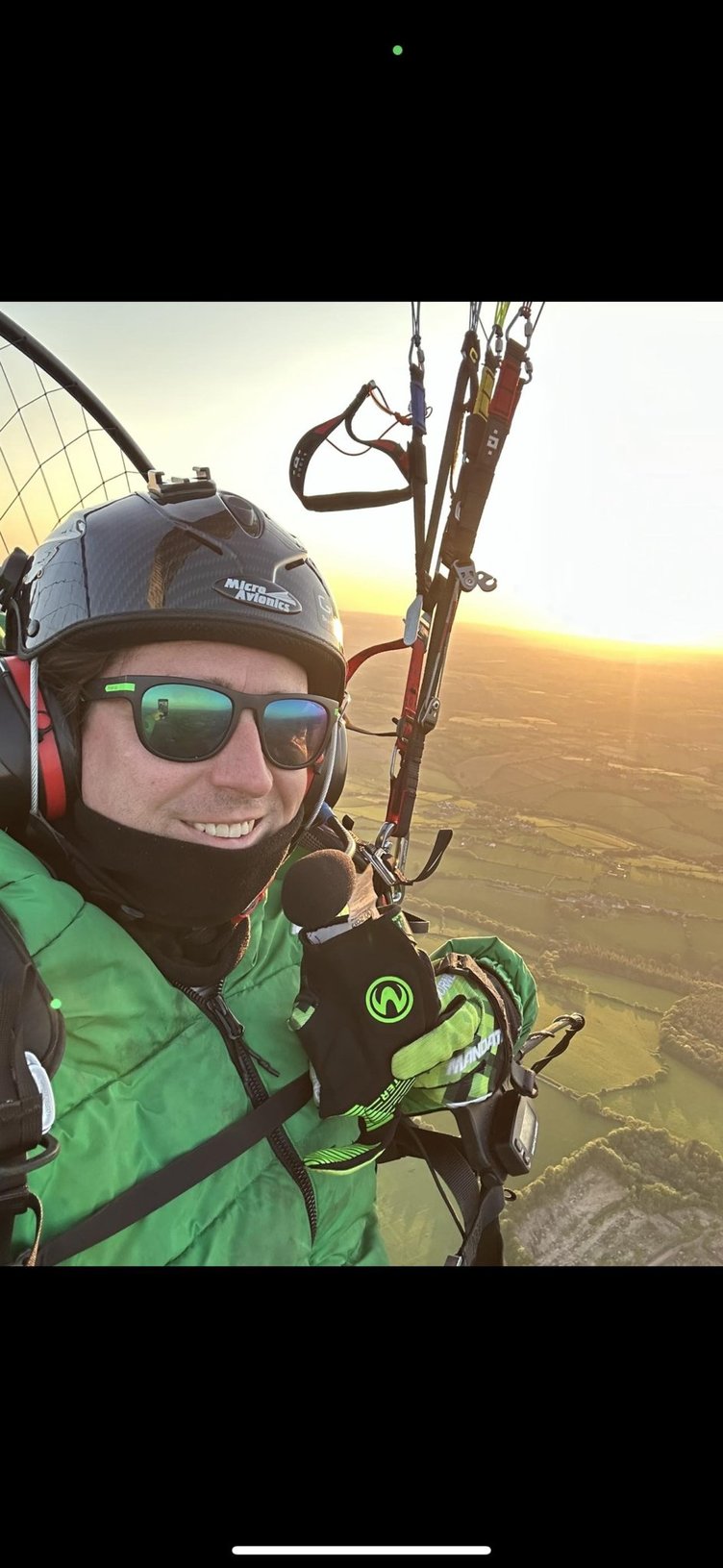Austin Irwin from the Rame Peninsula has been paramotoring for two years and enjoys capturing areas like Looe, Tamar and Whitsand Bay from above.
u u u
“IT’S the feeling of total freedom – like being a bird. If a place is beautiful on the ground it is even more beautiful from above.”
Austin Irwin had his first paramotor flight around two years ago and says he’s now lost count of the number of times he’s taken to the skies over Cornwall.
“It’s a lot, but not enough! I’ve always been fascinated with aviation, and it’s one of the cheapest ways to get your feet off the ground. It’s a fraction of the cost of say flying a light aircraft and it’s not as limiting either.
“There’s much more of an adventure element to a paramotor.”
Photographs Austin has taken during his flights over Looe, Whitsand Bay and the River Tamar give a taste of the experience and the unique view from more than 500 feet above the ground.
“It’s a total freedom feeling, like a bird. I have ADHD, and it’s a great thing for me to do because it focuses me and helps clear my mind,” he says.
“The perspective is a big element. Places are even more beautiful from above. It’s a very special and rare treat to be able to do it, because we get to see so much that most don’t get to see.”
The 34-year-old from the Rame Peninsula spends his working week as a plumbing, heating and gas engineer. But if conditions are right, he’s sure to be planning his next flight. Weather is the biggest factor.
“Anything under 10 knots of wind is flyable. You don’t want rain or fog, and that’s the biggest variable in the sport. At this time of year we tend to fly early morning and at dusk because the thermals get very strong very quickly, which makes it very uncomfortable.”
Depending on the wind strength, a paramotor flight can last for up to at least three hours. “Generally though, it’s about an hour or so,” says Austin.
“In the winter the flights tend to be shorter, because even with heated gloves and a flying suit, it’s still freezing.
“I burn roughly 4.5L of fuel an hour and the tank is 17L.”
When planning a trip, Austin also checks NOTAMS (Notices to Aviation) – a map updated daily, that shows the no fly zones, so for instance at times when they are firing at Tregantle you can only fly within a certain distance.
“From take off we have a minimum altitude of 500ft set by the Civil Aviation Authority. I’ve got friends who have been upto 10,000ft. Above that you begin to risk hypoxia, a lack of oxygen in the blood. Someone’s been to 25,000ft on one over in America. That’s airliner territory though. It’s amazing up high, but a bit boring just climbing and climbing for ages.”
Usually people fly in pairs or in groups, so that if there is an issue someone will land and get help or fetch a vehicle from the take off location. “We also go to fly ins, where there will be loads of people. We will often fly from one location to another where there is a cafe and have breakfast and then fly back.
“My instructor is planning to fly Lands End to John O’Groats in 24 hours this summer. This will be with a support vehicle.”
Amongst the paramotoring community in the south west, says Austin, everyone rotates locations and tries to be as respectful as possible toward landowners.
Paramotors, sometimes known as powered paragliders, consist of a motor driving a propellor, with both worn like a backpack by the pilot under a paraglider wing. Running costs are minimal, says the British Hang Gliding and Paragliding Association, making paramotoring a relatively cheap form of powered flying.
Austin explains how it works for someone new to the sport.
“You don’t need a licence to do it, and if you’re really mad you don’t need training, however it’s highly recommended. I trained with Oscar Haynes at Southwest Paramotors.
“You start out with ground handling - flying the wind on the ground, pretty much like a big kite. Then once you begin to master that you do it with the engine on your back. The first flight was short and just a circuit around Davidstow Airfield where Oscar teaches. Then they get slightly longer. The instructor has a radio and talks you through exactly what to do and when.”
Austin is keen to fly down in West Cornwall at Sennen or over the mining area round St Just. “It’s finding a farmer or someone with land down there that will let us fly from their land. Over in the United States, somewhere like the Grand Canyon, that would be an absolute dream come true.”
For someone that spends a lot of time hanging by a harness hundreds of feet in the air, Austin has quite a surprising confession to make.
“I’m actually scared of heights! I wouldn’t go up a ladder to fix some guttering. But with a paramotor you very quickly go from being on the ground to what feels like altitude, more than height.”





Comments
This article has no comments yet. Be the first to leave a comment.